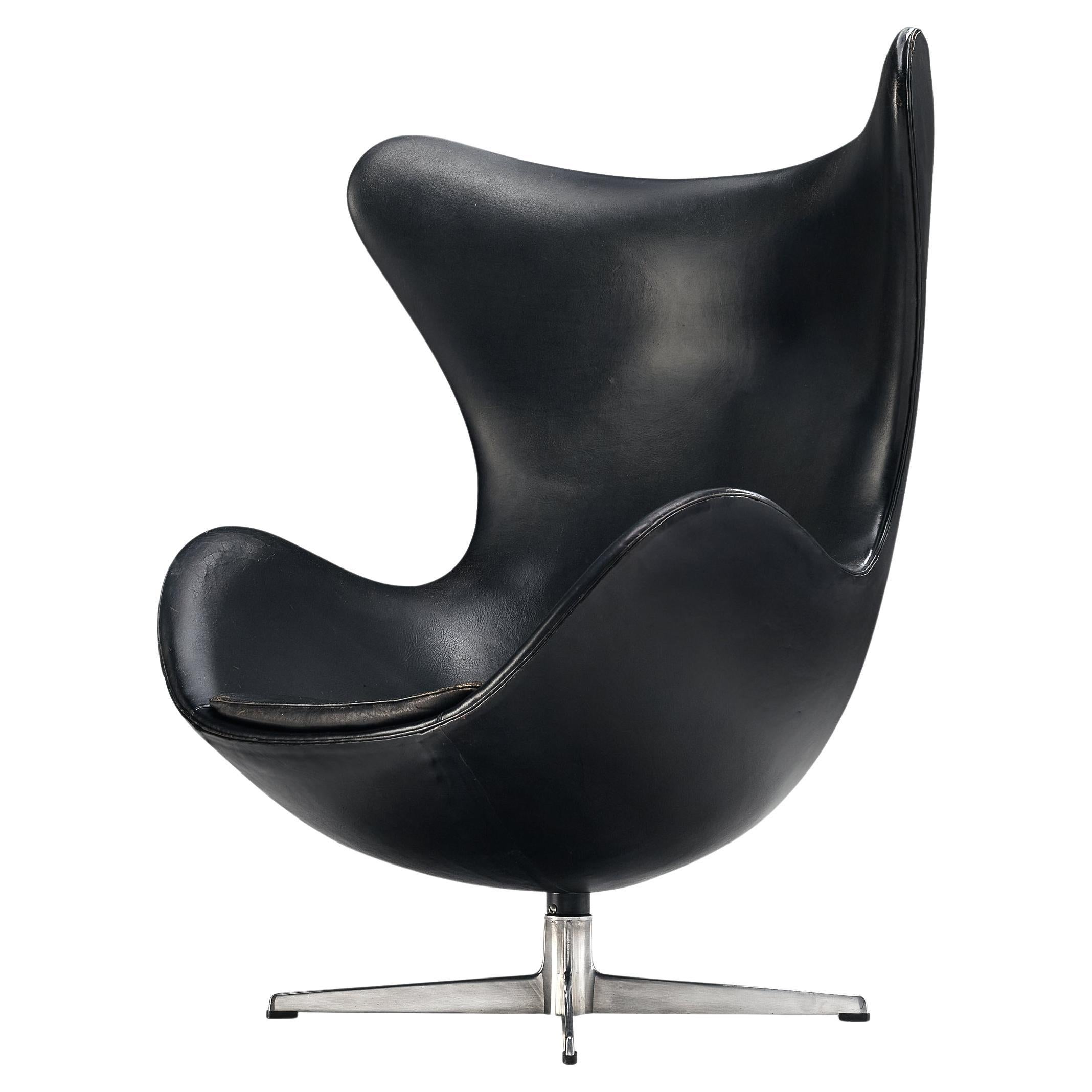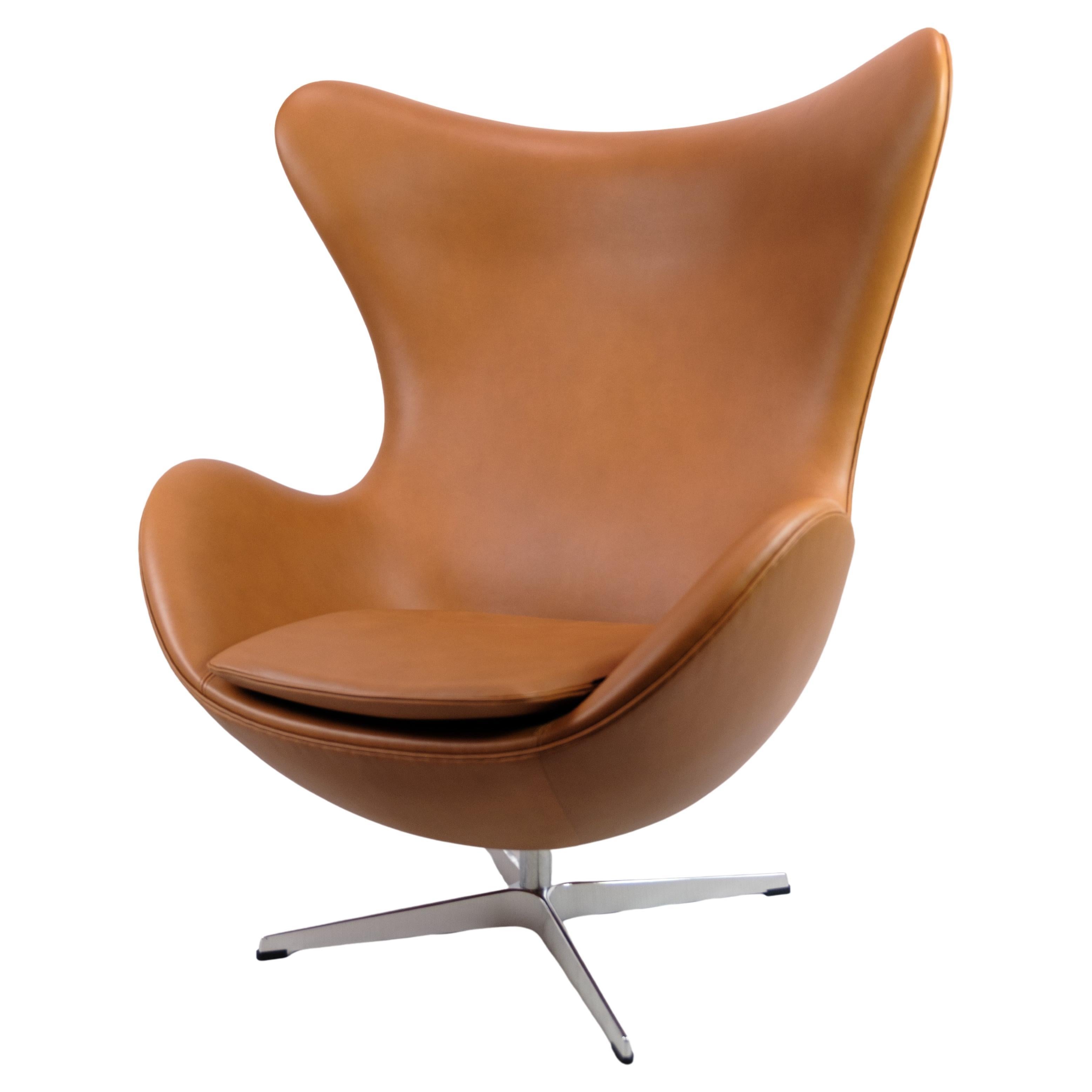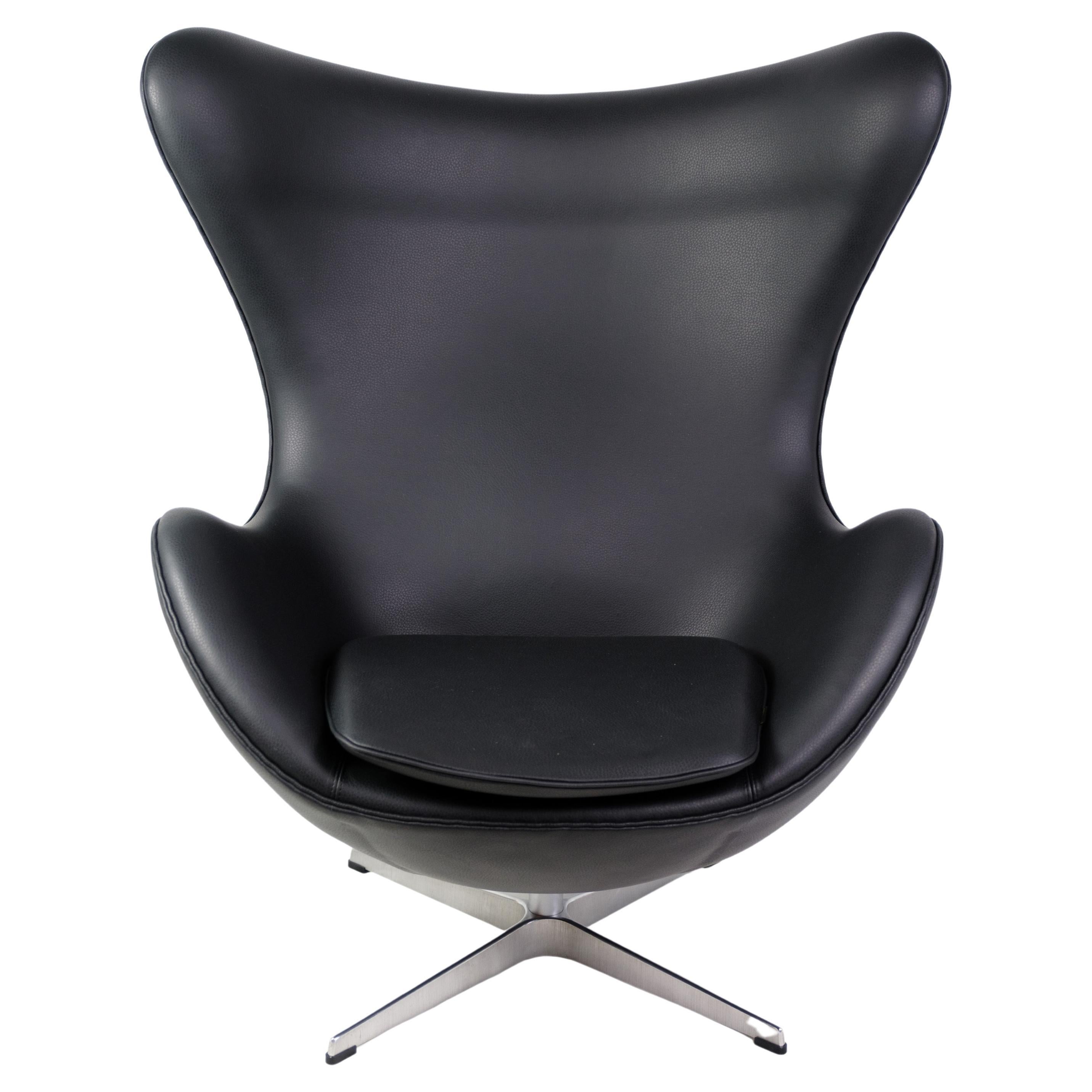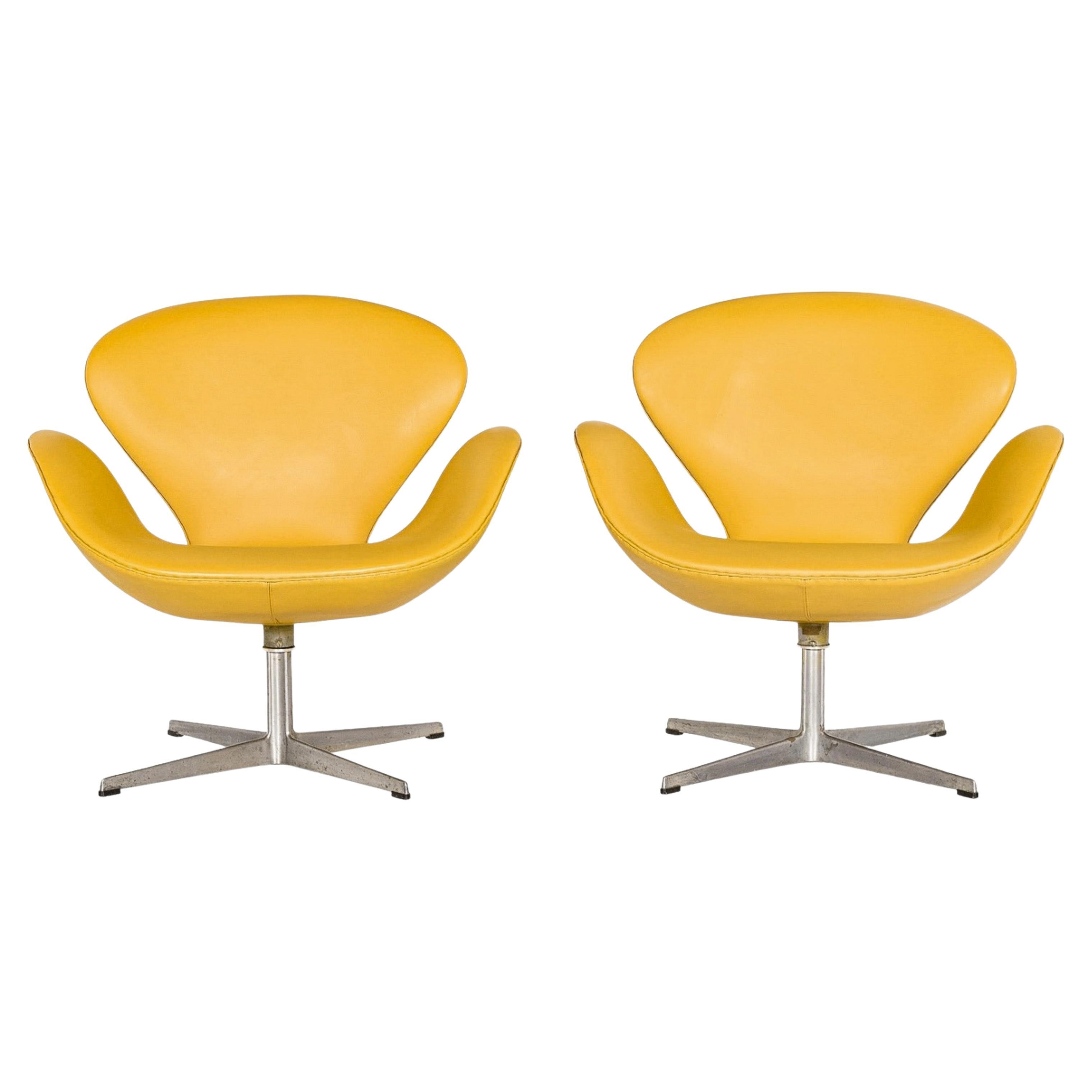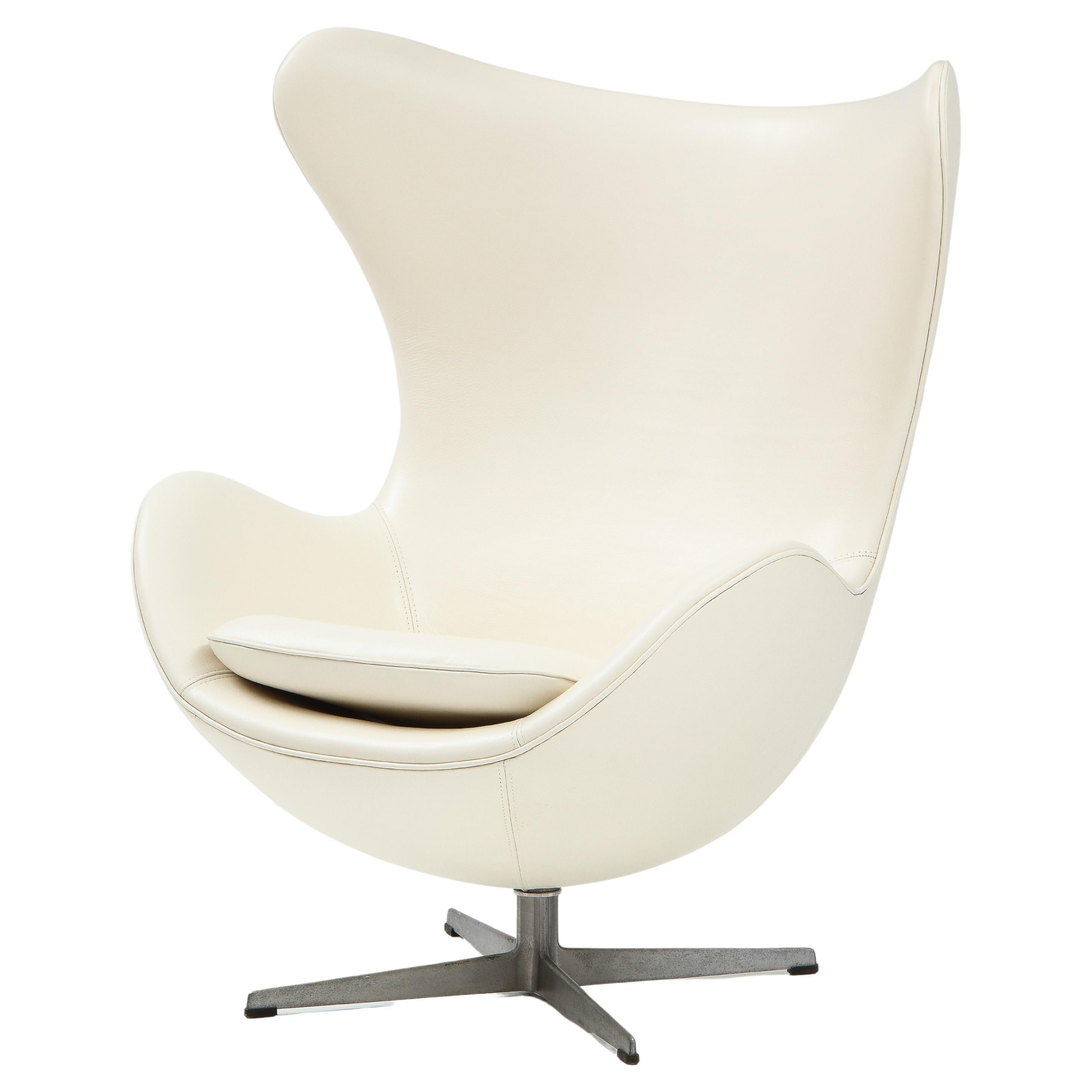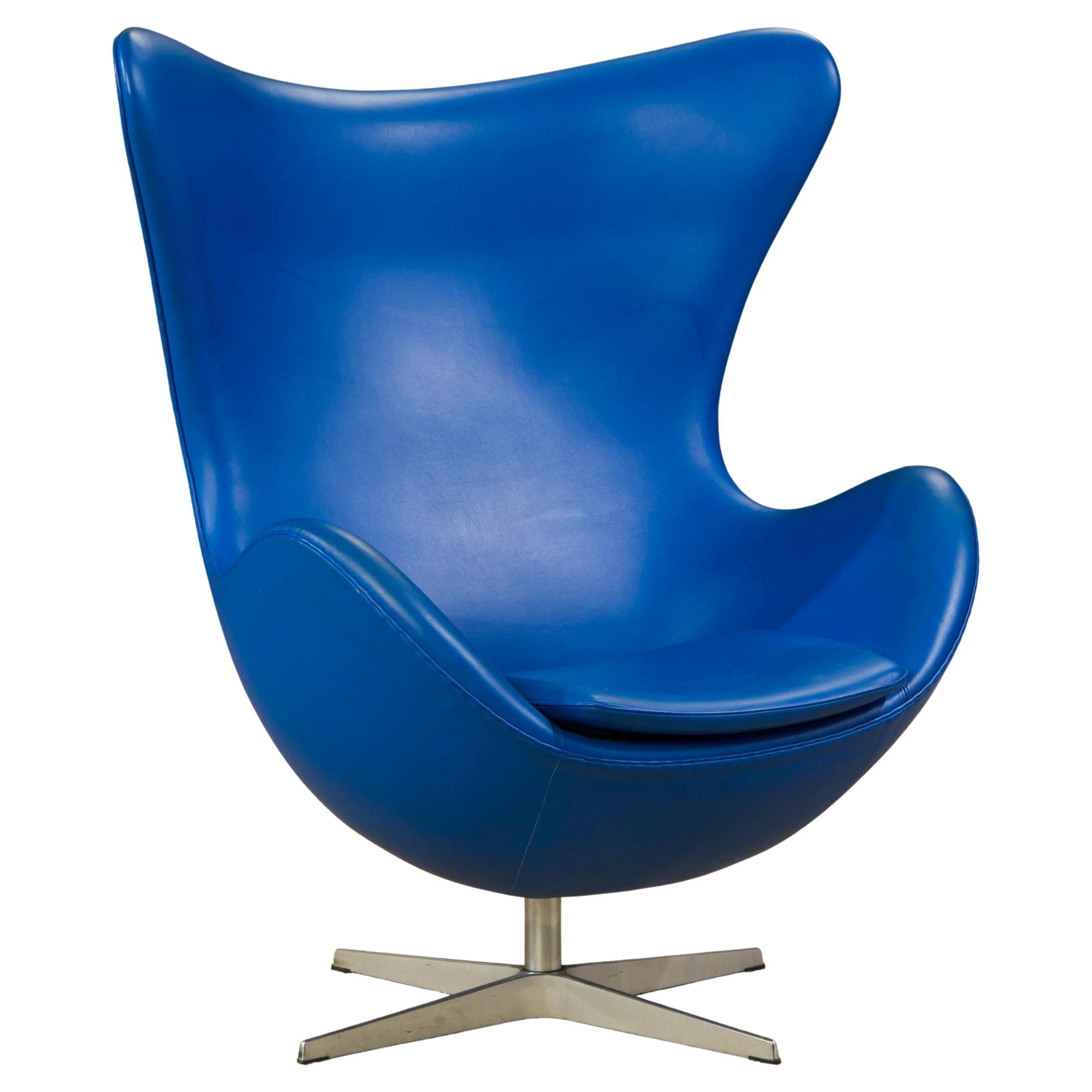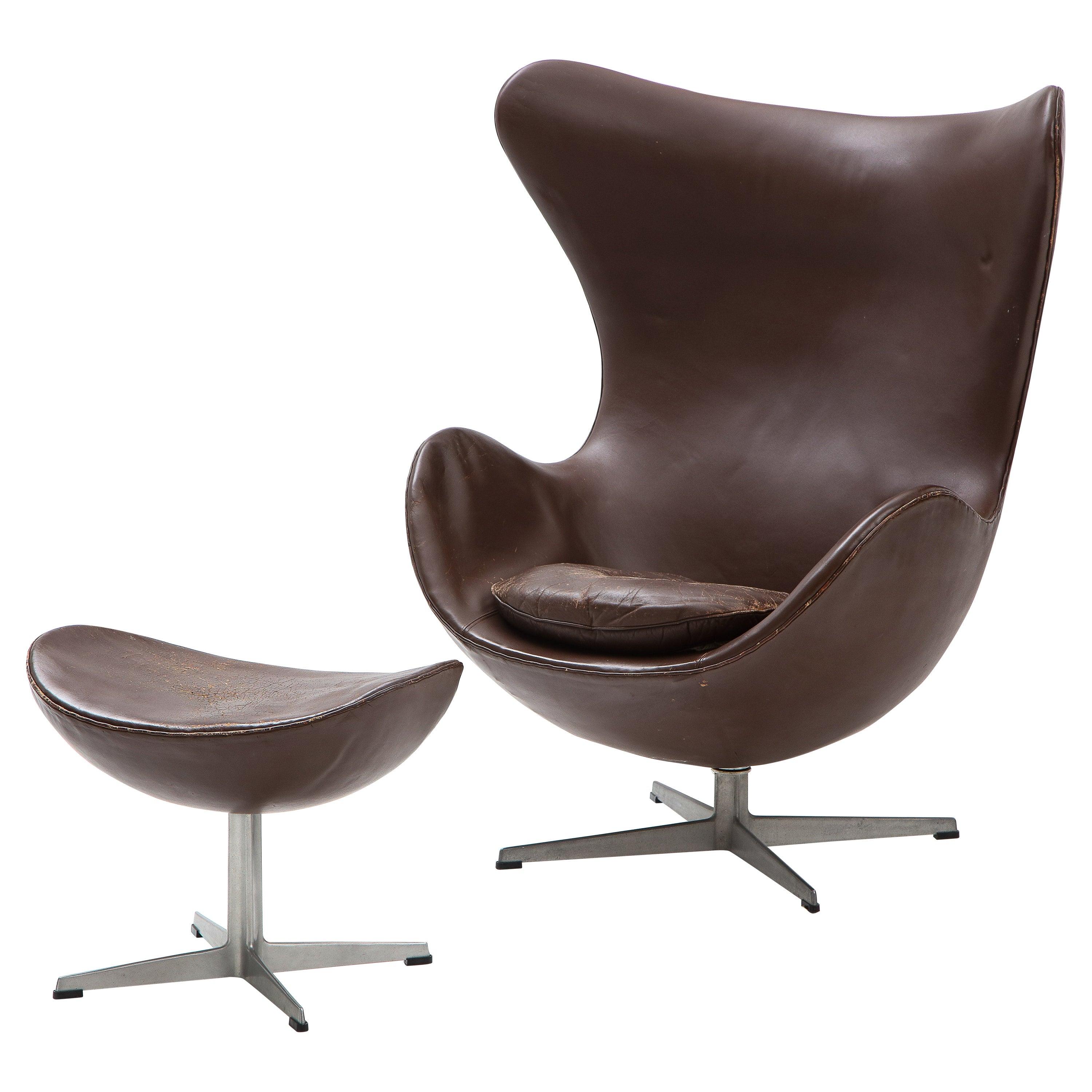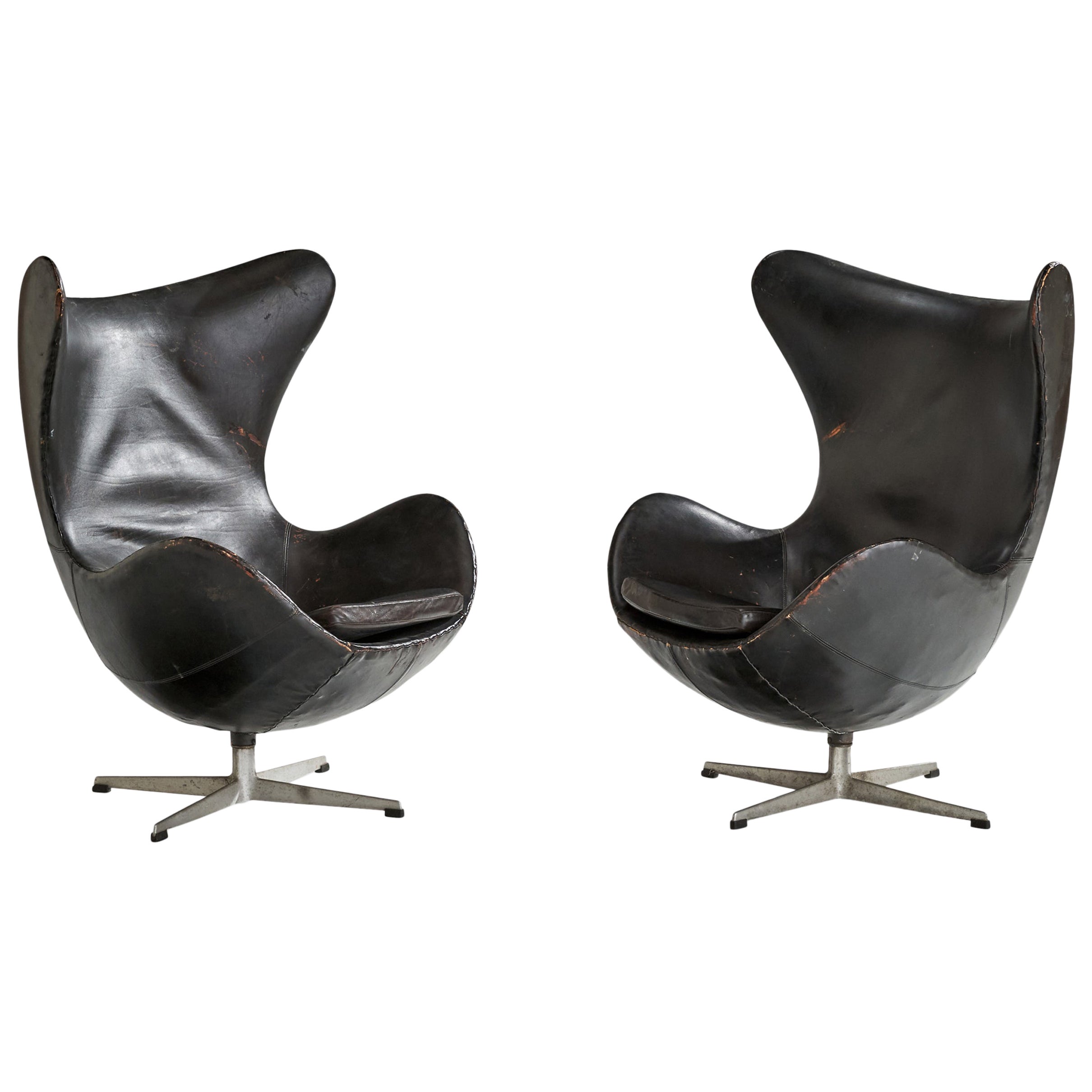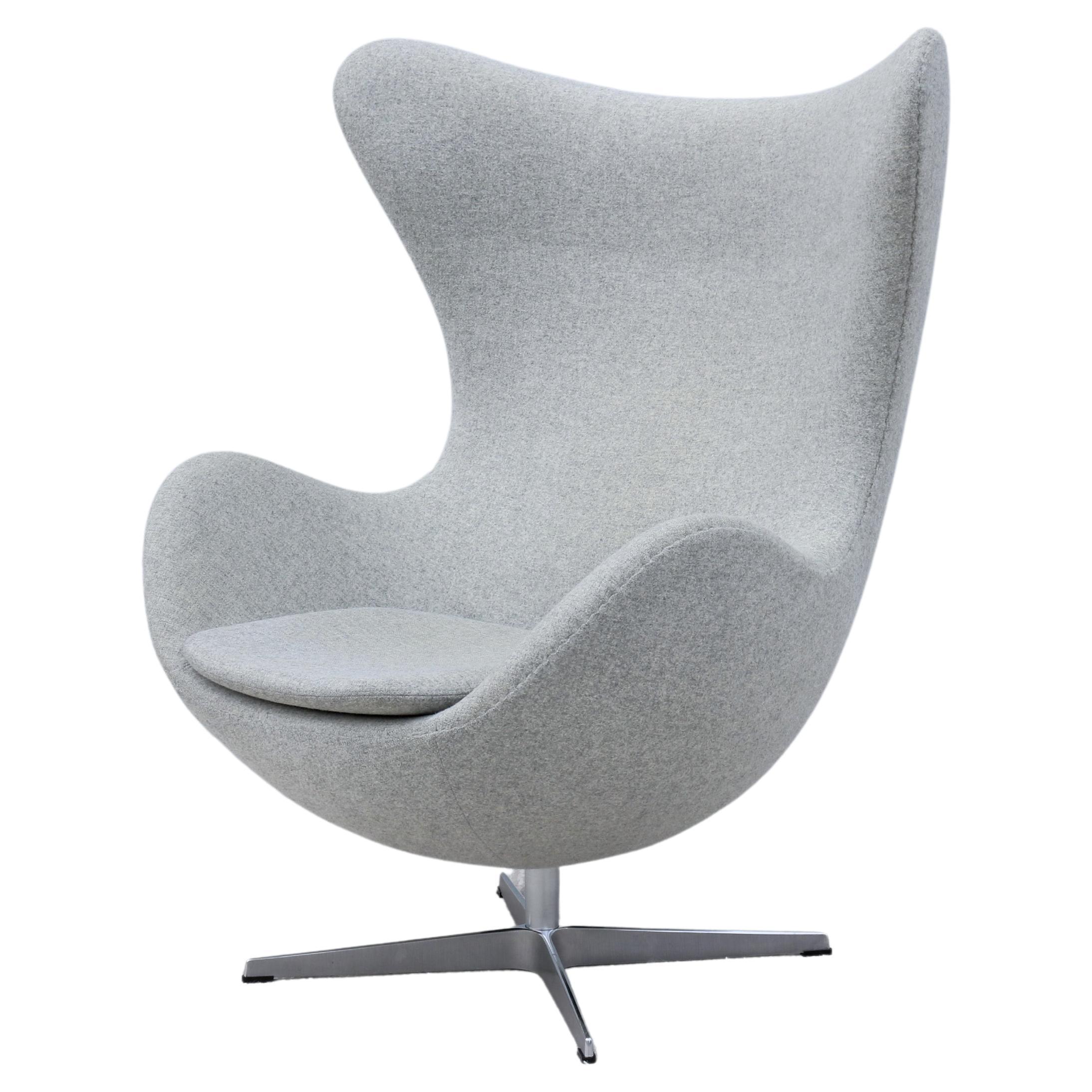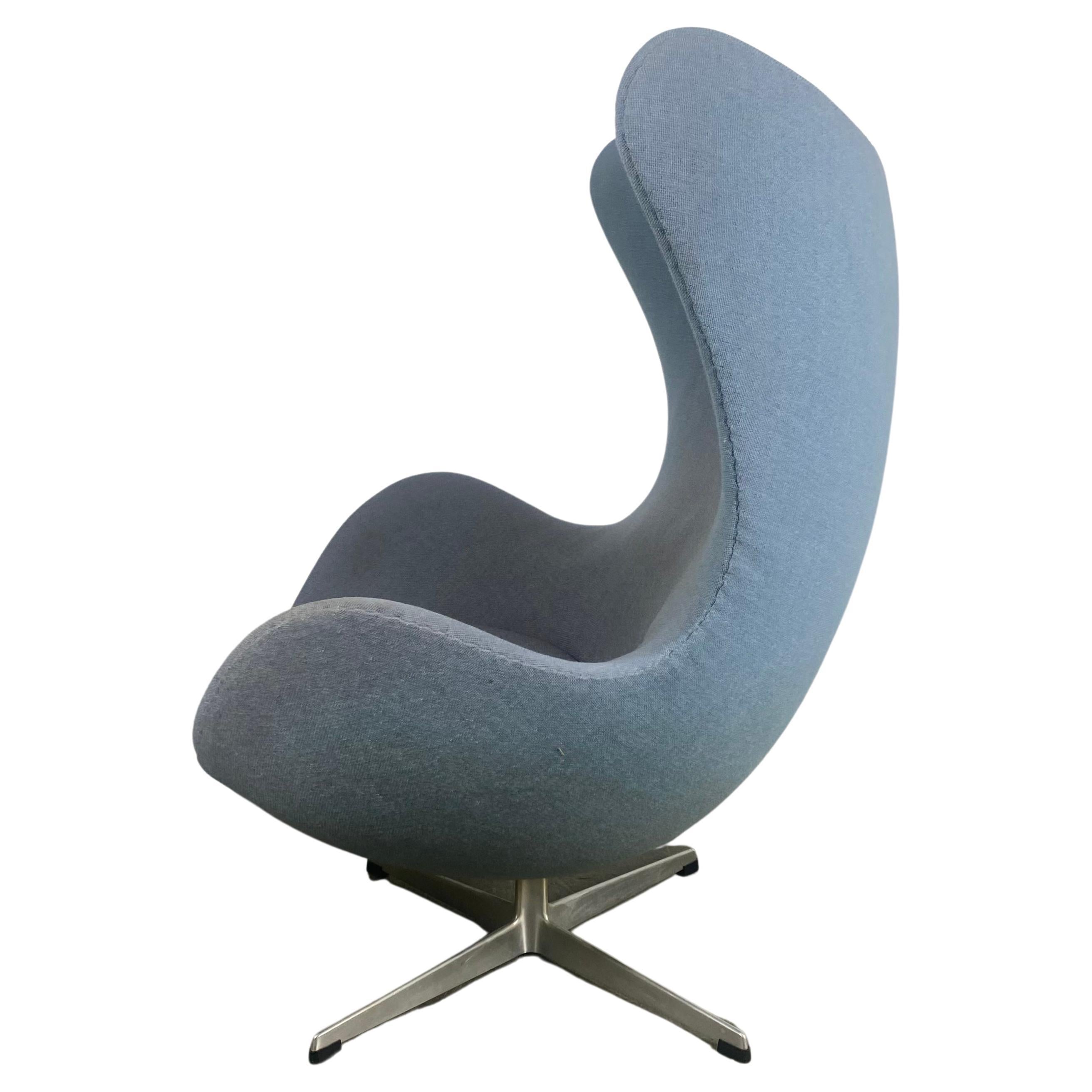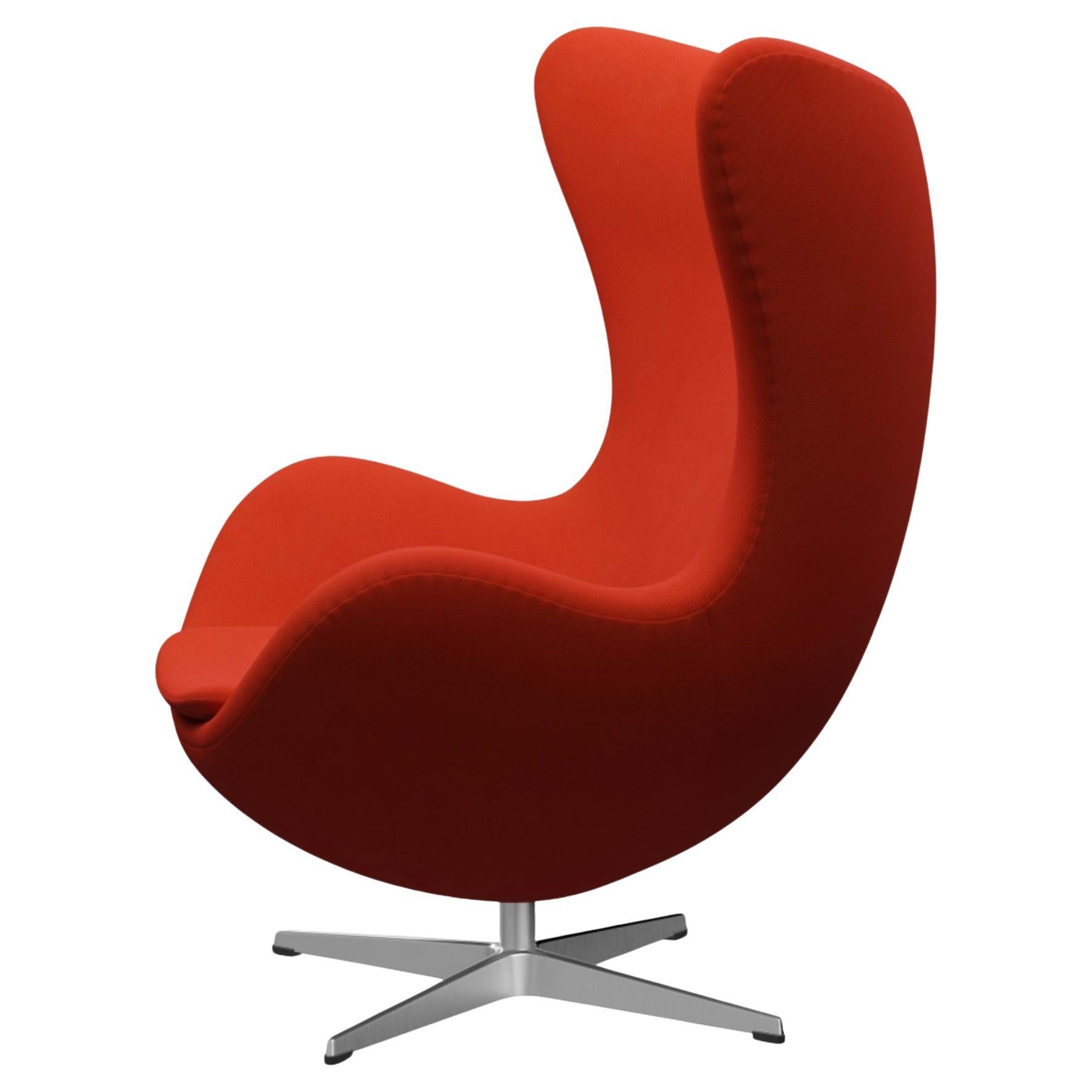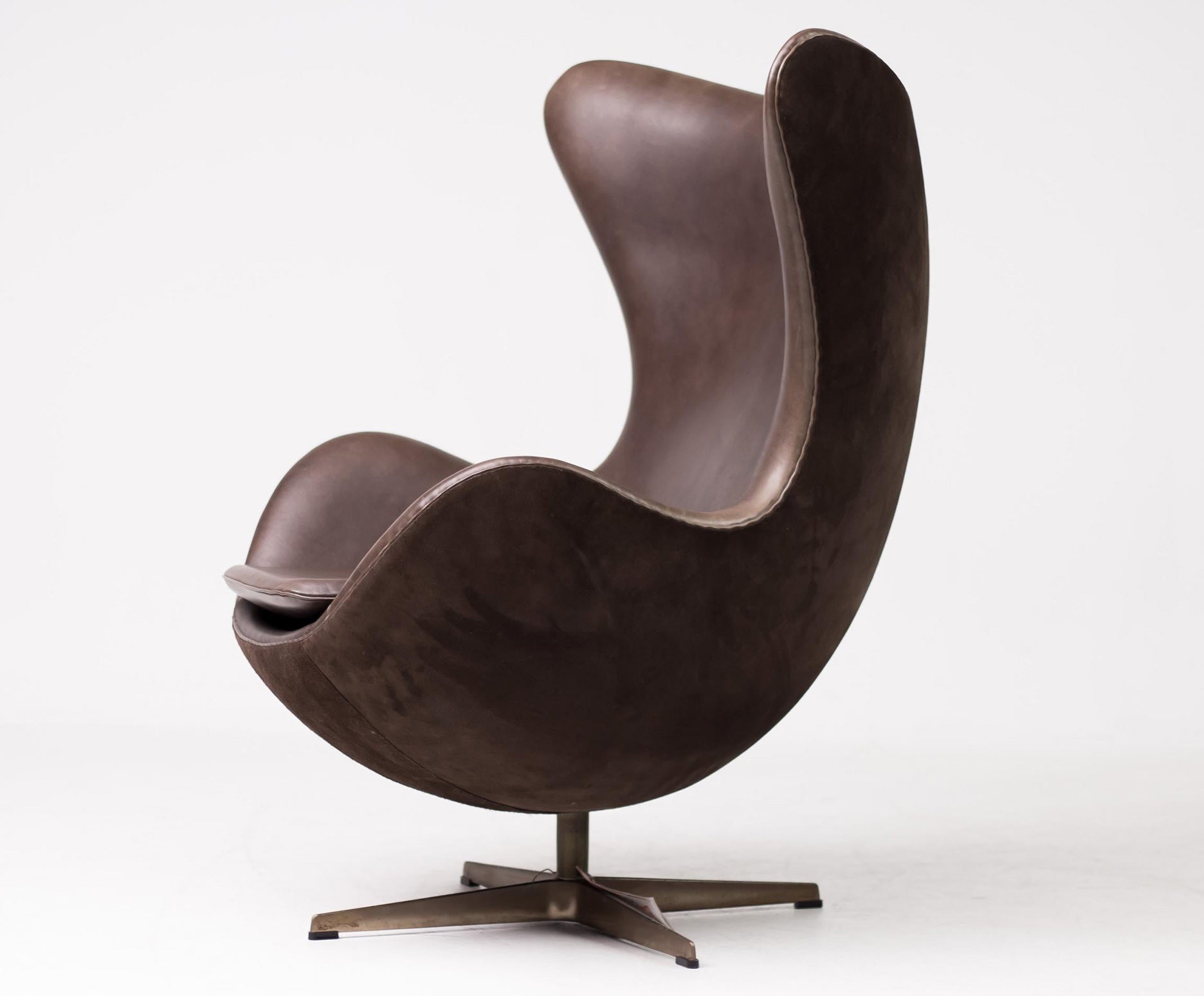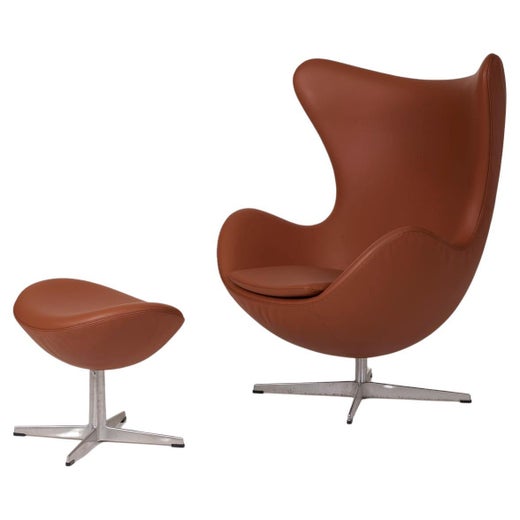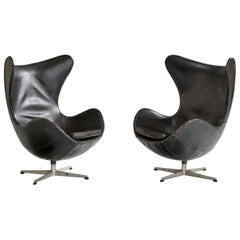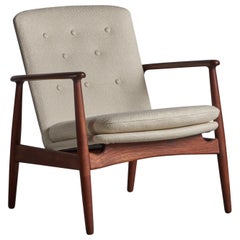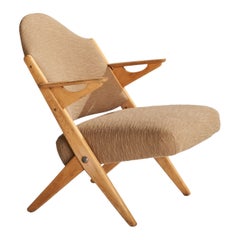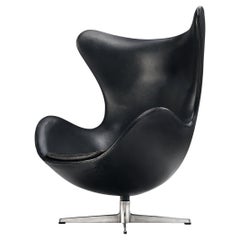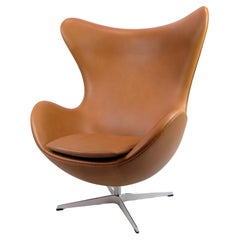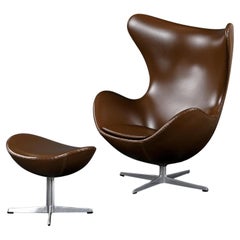
Arne Jacobsen, "Egg" Lounge Chairs, Black Leather, Fritz Hansen, Denmark, 1958
View Similar Items
Arne Jacobsen, "Egg" Lounge Chairs, Black Leather, Fritz Hansen, Denmark, 1958
About the Item
- Creator:Fritz Hansen (Manufacturer),Arne Jacobsen (Designer)
- Design:
- Dimensions:Height: 42 in (106.68 cm)Width: 34 in (86.36 cm)Depth: 29 in (73.66 cm)
- Sold As:Set of 2
- Style:Mid-Century Modern (Of the Period)
- Materials and Techniques:
- Place of Origin:
- Period:
- Date of Manufacture:1958
- Condition:Wear consistent with age and use. Very dramatic patina to leather and metal. Configuration of leather seams indicate leather is likely replaced at some point in time.
- Seller Location:High Point, NC
- Reference Number:1stDibs: LU3228125362792
Egg Chair
Designed in 1958 for the SAS Royal Hotel in Copenhagen, the Egg chair is a Scandinavian classic that has over the years become a fixture of corporate offices. It bears every mark of Arne Jacobsen's outsized perfectionism, for which the Danish architect was widely known.
The Egg chair was notable for its overtly organic appearance, which Jacobsen (1902–71) achieved with craft-based padding and upholstery finishing. Unlike the furniture maker’s previous range of shell chairs designed in laminated wood for Fritz Hansen, the Egg — and the Swan chair along with it — reflected a soulful new vision of modernity. Both created for the accommodation property, which opened in 1960, the chairs were meant to contrast with the SAS Royal Hotel’s straight lines as well as showcase Jacobsen’s eye for interiors.
A graduate from the Royal Danish Academy of Fine Arts, Jacobsen was a polymath who made just about everything — light fixtures, ashtrays, silverware and even door handles. For the SAS Air Terminal and Royal Hotel, he handled every detail, from textiles to furnishings. In the 1940s, the one-time mason found considerable success as an industrial designer, most notably with the Ant chair and Series 7 chairs for Fritz Hansen.
Jacobsen was influenced by modernism and designers like Ludwig Mies van der Rohe. Forward-looking projects like the “House of the Future” — codesigned with Flemming Lassen in 1929 and featuring a then-revolutionary automatic garage door opener — cemented his status as an innovator. Throughout his career, Jacobsen earned many awards, including the prestigious RIBA Bronze Medal in 1963.
With the Egg chair, Jacobsen continued his ongoing experimentation with synthetic materials. First, he devised small-scale clay models in his garage. The prototypes' finished shells were made of fiberglass-reinforced polyurethane foam, padded with cast latex foam rubber and then, upholstered with leather — or, in the cost-conscious hotel’s case, fabric.
Today, the Egg chair is supported by welded steel tubing and is mounted on a lightweight aluminum base. It is available from Fritz Hansen.
Arne Jacobsen
The eye-catching work of the Danish architect and designer Arne Jacobsen often introduces new collectors to mid-20th century furniture. With their fluid lines and sculptural presence, Jacobsen’s signature pieces — the elegant Swan chair and the cozy-yet-cutting edge Egg chair, both first presented in 1958 — are iconic representations of both the striking aesthetic of the designers of the era and their concomitant attention to practicality and comfort. Jacobsen designed furniture that had both gravitas and groove.
Though Jacobsen is a paragon of Danish modernism, his approach to design was the least “Danish” of those who are counted as his peers. The designs of Hans Wegner, Finn Juhl, Børge Mogensen and others grew out of their studies as cabinetmakers. They prized skilled craftsmanship and their primary material was carved, turned and joined wood. Jacobsen was first and foremost an architect, and while he shared his colleagues’ devotion to quality of construction, he was far more open to other materials such as metal and fiberglass.
Many of Jacobsen’s best-known pieces had their origin in architectural commissions. His molded-plywood, three-legged Ant chair (1952) was first designed for the cafeteria of a pharmaceutical company headquarters. The tall-backed Oxford chair was made for the use of dons at St. Catherine’s College, Oxford, whose Jacobsen-designed campus opened in 1962 (while still under construction). The Swan, Egg and Drop chairs and the AJ desk lamp were all created as part of Jacobsen’s plan for the SAS Royal Copenhagen Hotel, which opened in 1960. (The hotel has since been redecorated, but one guest room has been preserved with all-Jacobsen accoutrements.)
To Jacobsen’s mind, the chief merit of any design was practicality. He designed the first stainless-steel cutlery set made by the Danish silver company Georg Jensen; Jacobsen’s best-selling chair — the plywood Series 7 — was created to provide lightweight, stackable seating for modern eat-in kitchens. But as you will see from the objects on 1stDibs, style never took a backseat to function in Arne Jacobsen’s work. His work merits a place in any modern design collection.
Find authentic Arne Jacobsen chairs, tables, sofas and other furniture on 1stDibs.
- Arne Jacobsen, "Egg" Lounge Chairs, Leather, Steel, Denmark, 1958By Arne Jacobsen, Fritz HansenLocated in High Point, NCA pair of black leather and steel "Egg" lounge chairs designed by Arne Jacobsen and produced by Fritz Hansen, Denmark, c. 1958. Provenance: Estate of Russ Meyer. seat height 16.75”.Category
Vintage 1950s Danish Scandinavian Modern Lounge Chairs
MaterialsSteel
- Arne Vodder, Lounge Chair, Teak, Fabric, Denmark, 1950sBy Arne Vodder, BovirkeLocated in High Point, NCA teak and beige fabric lounge chair, designed by Arne Vodder and produced by Bovirke, Denmark, 1950s. 15.5" seat heightCategory
Vintage 1950s Danish Mid-Century Modern Lounge Chairs
MaterialsFabric, Teak
- Arne Hovmand-Olsen, Lounge Chair, Beech, Fabric, Denmark, 1950sBy Arne Hovmand-OlsenLocated in High Point, NCA beech and beige fabric lounge chair designed by Arne Hovmand-Olsen and produced by Komfort Randers, Denmark, 1950s. Seat height 16”.Category
Vintage 1950s Danish Mid-Century Modern Lounge Chairs
MaterialsFabric, Beech
- Jacob Kjaer, Lounge Chairs, Teak, Black Leather, Denmark, 1945By Jacob KjaerLocated in High Point, NCA pair of adjustable, teak and leather lounge chairs designed and produced by Jacob Kjaer, Denmark, 1945.Category
Vintage 1940s Danish Scandinavian Modern Lounge Chairs
MaterialsLeather, Teak
- Danish 1940s Slipper / Lounge Chairs, Black Leather, Brass Nails, 1940sBy Viggo BoesenLocated in High Point, NCA pair of 1940s modernist lounge chairs. An early example of traditional Danish cabinet making with original black dyed leather upholstery and brass nails framing the back and wooden...Category
Vintage 1940s Danish Scandinavian Modern Slipper Chairs
MaterialsBrass
- Ward Bennet, Lounge Chair, Wood, Velvet, USA, 1958By Ward BennettLocated in High Point, NCA black-painted wood and orange brown velvet lounge chair designed by Ward Bennet, 1958. Seat height 16.25”Category
Vintage 1950s American Mid-Century Modern Lounge Chairs
MaterialsVelvet, Wood
- Arne Jacobsen for Fritz Hansen Early 'Egg' Lounge Chair in Black LeatherBy Arne Jacobsen, Fritz HansenLocated in Waalwijk, NLArne Jacobsen for Fritz Hansen, early 'egg' lounge chair, model 3316, leather, steel, Denmark, design 1958, produced 1966. This chair is one of the most iconic designs in the histor...Category
Vintage 1950s Danish Scandinavian Modern Lounge Chairs
MaterialsSteel
- Egg, Model 3316, Arne Jacobsen, Fritz HansenBy Arne Jacobsen, Fritz HansenLocated in Lejre, DKThe egg, model 3316, is an iconic design chair created by the renowned Danish designer Arne Jacobsen in 1958. The chair is produced by Fritz Hansen, one of Denmark's leading furnitur...Category
21st Century and Contemporary Danish Mid-Century Modern Lounge Chairs
MaterialsAluminum
- 1974 Original Brown Leather Arne Jacobsen for Fritz Hansen Egg Chair & OttomanBy Arne Jacobsen, Fritz HansenLocated in Chattanooga, TNYes, this is the original leather from birth in 1974. Miraculously bereft of any significant visible flaws lo these many years, this leather will make you salivate. The color changes...Category
Vintage 1970s Danish Mid-Century Modern Lounge Chairs
MaterialsChrome
$12,565 Sale Price / set30% Off - Egg, Model 3316, Arne Jacobsen, Fritz Hansen, 1958By Arne Jacobsen, Fritz HansenLocated in Lejre, DKThe egg, model 3316 designed by Arne Jacobsen in 1958 and manufactured by Fritz Hansen. The chair has original upholstery in black elegance leather. This product will be inspected...Category
Late 20th Century Danish Mid-Century Modern Armchairs
MaterialsAluminum
- Armchair “Egg Chair” Designed by Arne Jacobsen for Fritz Hansen, Denmark, 1958By Arne Jacobsen, Fritz HansenLocated in Stockholm, SEArmchair “Egg chair” designed by Arne Jacobsen for Fritz Hansen, Denmark. 1958. Original leather and aluminium. Very early model with the built up seat, without separate cushion. ...Category
Vintage 1950s Swedish Scandinavian Modern Swivel Chairs
MaterialsSteel
- Mid Century Danish Modern Yellow Swan Chairs by Arne Jacobsen for Fritz HansenBy Arne Jacobsen, Fritz HansenLocated in Detroit, MIThe mid century Danish modern Arne Jacobsen for Fritz Hansen “Swan” lounge chair was designed in 1958 by Jacobsen for the lobby of the SAS Royal Hote...Category
Vintage 1960s Danish Mid-Century Modern Lounge Chairs
MaterialsSteel
Recently Viewed
View AllRead More
The 21 Most Popular Mid-Century Modern Chairs
You know the designs, now get the stories about how they came to be.
Arne Jacobsen’s Egg Chair Scrambled the Idea of What a Wingback Could Be
The curvaceous Egg was designed to cradle the body and offer privacy. Later, it became the seat of choice for bosses in movies, too.
